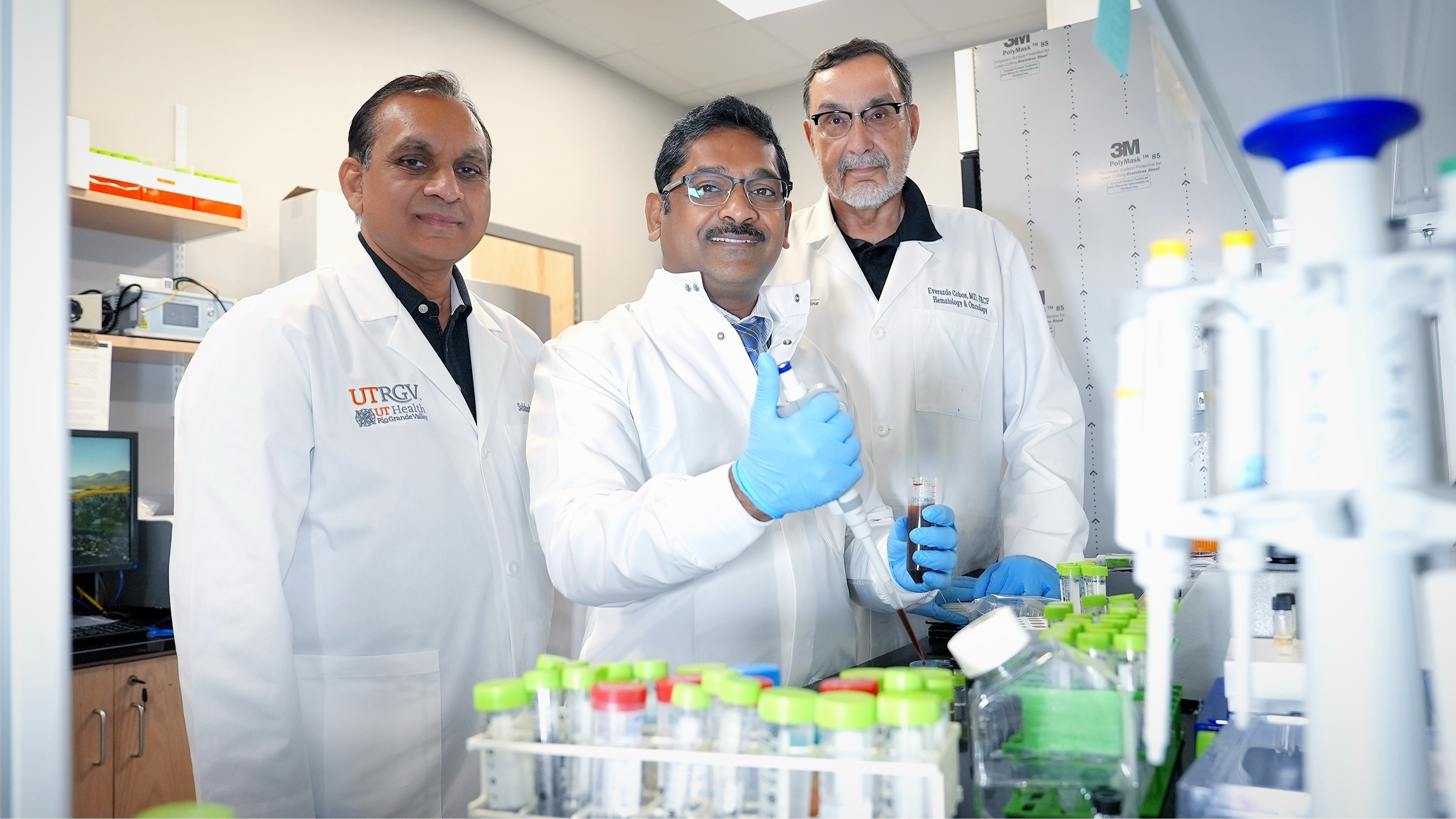By Maria Gonzalez
RIO GRANDE VALLEY, TEXAS – JUNE 12, 2025 – The University of Texas Rio Grande Valley has received a $2.8 million grant from the Cancer Prevention and Research Institute of Texas (CPRIT) to launch the Drug Delivery and Nanomedicine Core (DDNC), a specialized research facility focused on advancing cancer research, education and care through nanotechnology.
The new core, which began operations June 1, is located within the university’s South Texas Center of Excellence in Cancer Research (ST-CECR) in McAllen. It is the first facility of its kind within a 250-mile radius and does not duplicate any other existing core facility in Texas.
“This facility will directly address one of the greatest health needs of our region – cancer,” said Dr. Can Saygin, UTRGV senior vice president for research and dean of the Graduate College. “It will bring advanced resources and clinical partnerships to the Valley, strengthen our research capacity and give our faculty and students access to groundbreaking tools in drug delivery and nanomedicine.”
Serving the four-county Rio Grande Valley, home to about 1.4 million people and one of the nation’s highest in cancer-related chronic disease rates, the core aims to support research that addresses urgent health disparities and advances new cancer therapies.
“The Drug Delivery and Nanomedicine Core aims to tackle a key challenge in cancer treatment by selectively killing cancer cells without harming healthy ones,” said Dr. Murali M. Yallapu, principal investigator and associate professor in the Division of Cancer & Immunology at the UTRGV School of Medicine. “This core will bring research experience and clinical expertise together to close the gap between current treatments and the need for more improved, targeted cancer care.”
SCIENTIFIC CAPABILITIES AND REGIONAL IMPACT
The facility will support faculty, students and investigators developing therapies across a wide range of biomedical areas. Its capabilities include designing nanoparticles for cancer therapy, developing new formulations for drugs and genetic materials like mRNA, building platforms for vaccine and gene-editing technologies, and assisting with safety and efficacy testing for future clinical trials.
The grant was awarded through CPRIT’s Core Facility Support Awards (CFSA) program and will support the core’s development and operations through May 31, 2030.
“Our goal is to remove obstacles that slow cancer research and provide the tools needed to move from discovery to application,” Yallapu said. “That includes helping researchers build new delivery systems and test their effectiveness in preclinical models.”
In addition to supporting cutting-edge research, the facility is expected to have broad institutional and statewide impact.
“This facility will benefit faculty, students and researchers across scientific fields, including medicine, biology, engineering and chemistry,” said Dr. Subhash C. Chauhan, professor in the UTRGV School of Medicine and director of the South Texas Center of Excellence in Cancer Research. “It will strengthen the region’s research capacity and contribute to statewide and national efforts to improve cancer outcomes. The DDNC will help make the Valley a center of excellence in nanomedicine and cancer research.”
More than 50 researchers at UTRGV are expected to use the facility across disciplines such as cancer biology, chemistry, materials science and biomedical engineering.
The core also plans collaborations with institutions such as Baylor College of Medicine, UT San Antonio, UT Southwestern, Baylor Scott & White and Texas A&M University-Kingsville. These partnerships will position UTRGV as a statewide resource for drug delivery and nanomedicine research.
TRAINING AND RESEARCH FOR THE FUTURE
The core will offer workshops, internships and hands-on training for undergraduate and graduate students, residents and early-career investigators. It will also provide consultation services for experimental design and therapeutic platform development.
“Students will engage with the core through hands-on training in nanomedicine techniques, research projects, and internships,” Yallapu said. “They’ll gain practical experience working alongside experts in a cutting-edge environment.”
Over the next three to five years, the core is expected to develop and test new nanoformulations, conduct preclinical studies and support data collection for patents and clinical trials.
“This core will provide researchers and clinicians with tools to develop next-generation therapies – from gene therapy to CAR-T cells,” said Dr. Everardo Cobos, interim dean of the UTRGV School of Medicine. “It will support real-world applications of research, build collaboration across disciplines and prepare the next generation of cancer scientists.”
The DDNC will enhance cancer prevention research and provide critical infrastructure to accelerate the fight against cancer in underserved communities.
“This initiative positions South Texas as a leader in advanced drug delivery and nanomedicine technologies,” Saygin said. “It’s another example of how UTRGV is growing its research portfolio to meet critical public health needs through science, education, and innovation.”
ABOUT UTRGV
The University of Texas Rio Grande Valley (UTRGV) was created by the Texas Legislature in 2013 as the first major public university of the 21st century in Texas. This transformative initiative provided the opportunity to expand educational opportunities in the Rio Grande Valley, including a new School of Medicine and a School of Podiatry, and made it possible for residents of the region to benefit from the Permanent University Fund – a public endowment contributing support to the University of Texas System and other institutions.
UTRGV has campuses and off-campus research and teaching sites throughout the Rio Grande Valley including Brownsville (formerly The University of Texas at Brownsville campus), Edinburg (formerly The University of Texas-Pan American campus), Harlingen, Weslaco, McAllen, Port Isabel, Rio Grande City and South Padre Island. UTRGV, a comprehensive academic institution, enrolled its first class in the fall of 2015; the School of Medicine welcomed its first class in the summer of 2016, and the School of Podiatric Medicine in the fall of 2022.

